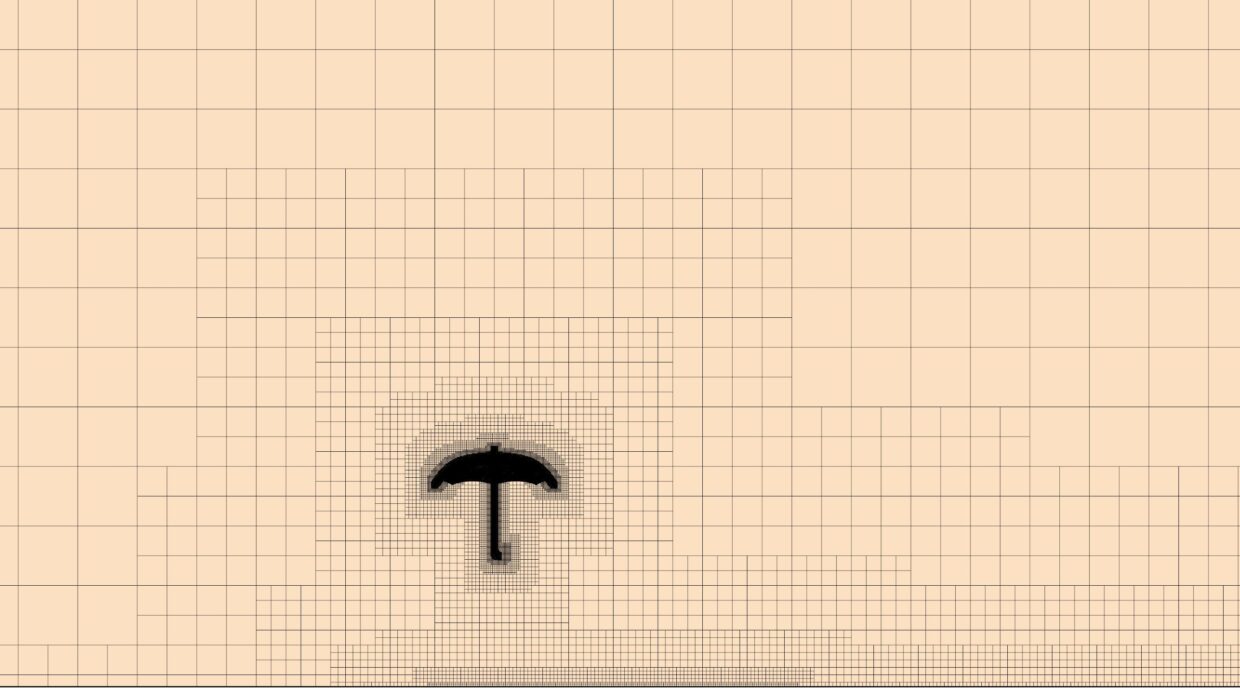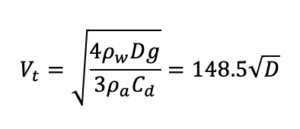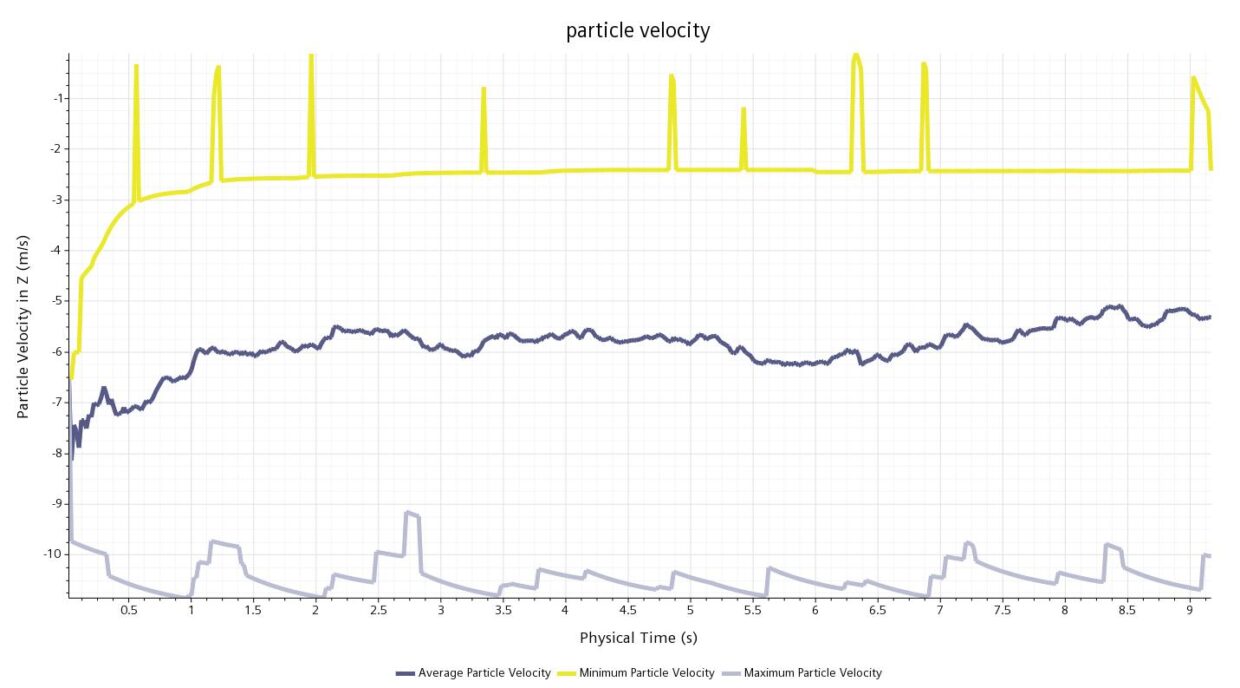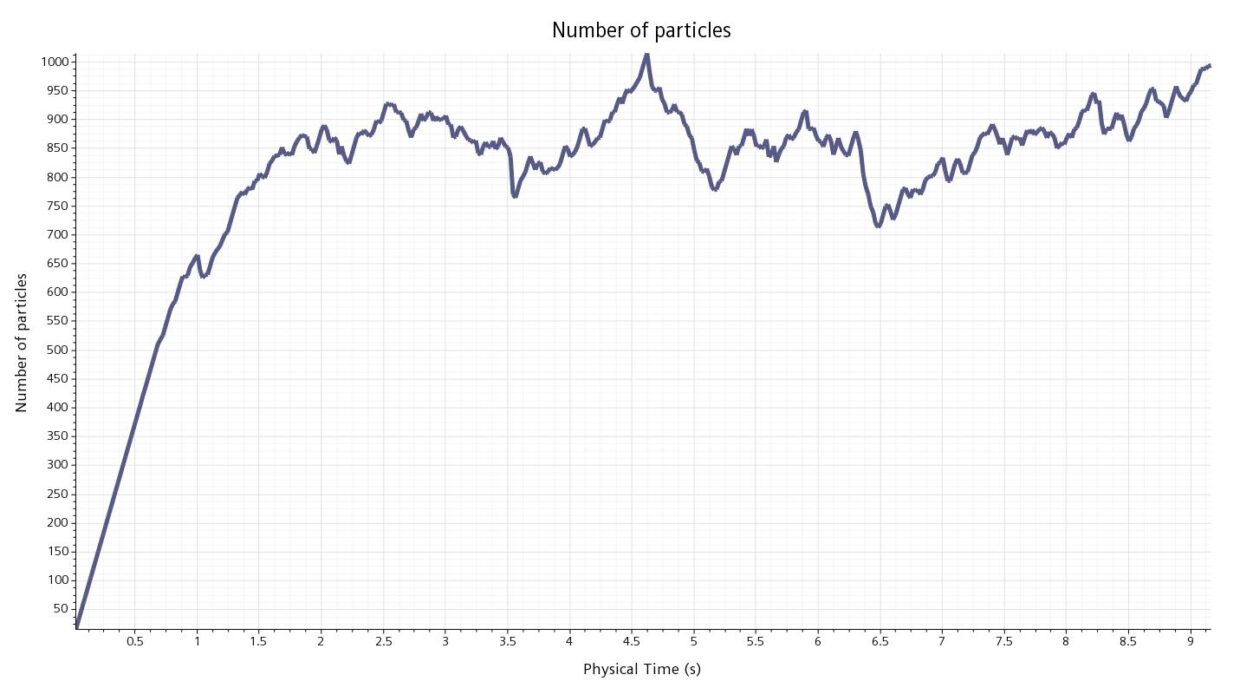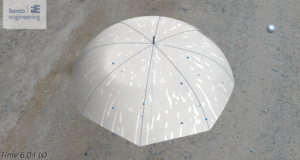Physics
Since we are modelling both water and air, we need a Multiphysics model in this case. However, in this simulation we want to model two things; we want to model the droplets in the air and we want to model the water droplets sliding off an object (in this case an umbrella).
To model the droplets sliding off an umbrella we would like to use the Eulerian Volume of Fluid (VOF) multiphase method. However, to model the droplets in the air with this method we would need a mesh size at most as big as our smallest droplet and preferably a little smaller. This would lead to enormous mesh sizes causing the calculation to run for weeks or even months. For the droplets itself we would thus preferably use the Lagrangian method. The Lagrangian method follows the particles itself (which are called parcels) and solves the equations for each parcel. The size of the parcel is mesh independent; thus we can use a coarse mesh but still add small parcels (such as our rain droplets with sizes between 0.6mm and 5mm).
We now defined the two multiphase models we would like to use, but we would like to use them in combination: Lagrangian for the droplets and Eulerian VOF for the rain on the umbrella. Luckily it is possible in Simcenter STAR CCM+ (2020.3) to use impingement, where Lagrangian particles are changed to VOF when the Lagrangian particles reach a certain size (such as when they spread out on a surface). Once the VOF water phase then reaches the end of the umbrella the small droplets coming off the umbrella will again be changed to Lagrangian particles to continue their fall towards the ground.
By combining the two methods we only have to create a small mesh on our umbrella, all other regions can be modelled with a coarse mesh. This allows us to solve the simulation much faster.



